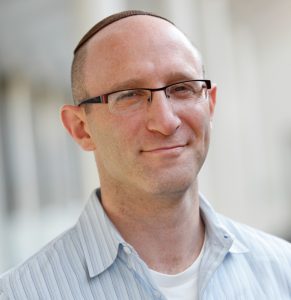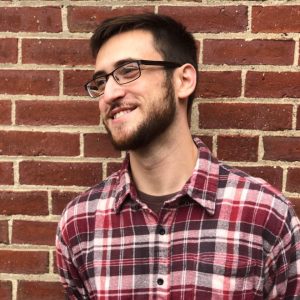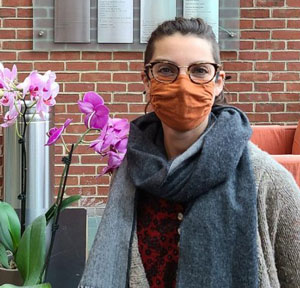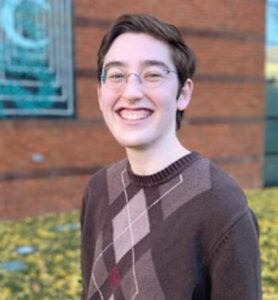Jewish learning “Tefillah Groups Are Like Jazz”: Hebrew College’s Distinguishing Approach to Rabbinical Formation


The six weekly groups approach tefillah in different but equally innovative ways and contexts with the purpose of instilling a strong ritual practice in the future rabbis. To lead others in devotional life, one needs to have a devotional life themself.
Ranging from more traditional liturgical practices to creative outdoor movement minyans, the six groups “share the College’s real openness to what Judaism can be,” according to Klein. “It’s been special to juxtapose a more traditional davening or learning space with a more creative, experimental space in which I feel like I can ‘talk back’ to the words I’ve put so much effort into learning,” said Chaim Spaulding of their time in Adonai Sefatai Tiftach, a creative-writing focused group.
While the groups differ in form and approach, they share a desire to make prayer a meaningful, spiritual experience. Talmud Torah Tefillah (TTT), for example, invites its members into a meditative space of song, words, silence and prayer, while making use of a diverse set of Jewish and non-Jewish sources. “In TTT we think ‘less is more,’” says Joshua Greenberg, whose been with the group for nearly six years and currently serves as the group’s facilitator.

The integration of knowledge and practice—or of head, heart, and body—is one of the motivating goals of the tefillah program. The knowledge must be internalized as personally meaningful and inspiring before it can be put into practice. “We have to digest it,” said Klein. “Tefillah groups are like jazz. Once you know the scales, if you want, you can learn jazz…but if you don’t know the scales, it’s kind of hard to learn jazz. Our students are learning the liturgical scales.”

While groups like Movement Minyan represent a more kinetic and active way to do tefillah, the creative-writing focused Adonai Sefatai Tiftach group exemplify a very contemplative approach. “Last semester, our practice was to meet on Wednesday afternoons and share poetry, prose, and creative translations that we had written throughout the week in response to a particular prayer in the Shacharit service,” said group member Chaim Spaulding. “This year, we decided to transition from a reflection group into a davening group, exploring how the act of writing itself can be a prayer practice.”

Each group glimpses into various interpretations of Judaism present and thriving at the College. For example, at a typical TTT meeting, “The first fifteen minutes are spent singing a niggun, a wordless melody. Then, we spend about fifteen minutes examining two separate texts, one being a verse from that week’s Torah reading, the other from another source.” After pondering the two texts, the group sings them together and then allows time for individual prayer.
The Movement Meditation Minyan, a group that has reformed this year after a hiatus, explores ways of moving through shacharit with visualizations, meditations, voice, and movement practices. “We are curious about how we can explore the nuances of our texts in our bodies and what would it mean to map a movement onto some of these pieces of our liturgy that we are learning about with our brains,” according to Sarah Rovin, one of the three facilitators. Rovin, for example, often leads the amidah and invites people to walk or move in different ways while meditating on one aspect or section of the prayer, such as gratitude, and to see how that resonates or lands inside their body.
Super Sonic Tefillah, by contrast, “explores prayer in all its sonic glory,” according to the group’s description. Rovin, who is also a member of Super Sonic, added, “it’s an exploration of the liturgy in a really pslam-like way. And I think, similarly, people will split up the different sections and bring whatever they are excited about to it.” Meanwhile, in the Listening to God tefillah group, practitioners come back to the same niggun as it weaves in and out of the liturgy. The group strives to balance between the sounds and silence, in order to listen to each other, ourselves, and the Divine. Experimental-Traditional Tefillah group members seek to supplement traditional liturgy with creative liturgical forms while uplifting different Jewish cultural traditions.
Hebrew College’s Rabbinical School, as glimpsed in tefillah, inspires and fosters a certain kind of liturgical creativity. Citing Jewish Studio Project and Dayenu: A Jewish Call to Climate Action as exemplars of Hebrew College alumni creatively engaging with liturgy and other elements of tradition, Rovin said, “It’s just really inspiring to see what Hebrew College rabbis are doing out in the world.”
If you or someone you know is considering the rabbinate, please join us or share information about our in-person fall Open House on November 18, 2024. Learn more and register here or visit hebrewcollege.edu/rabbinical.


